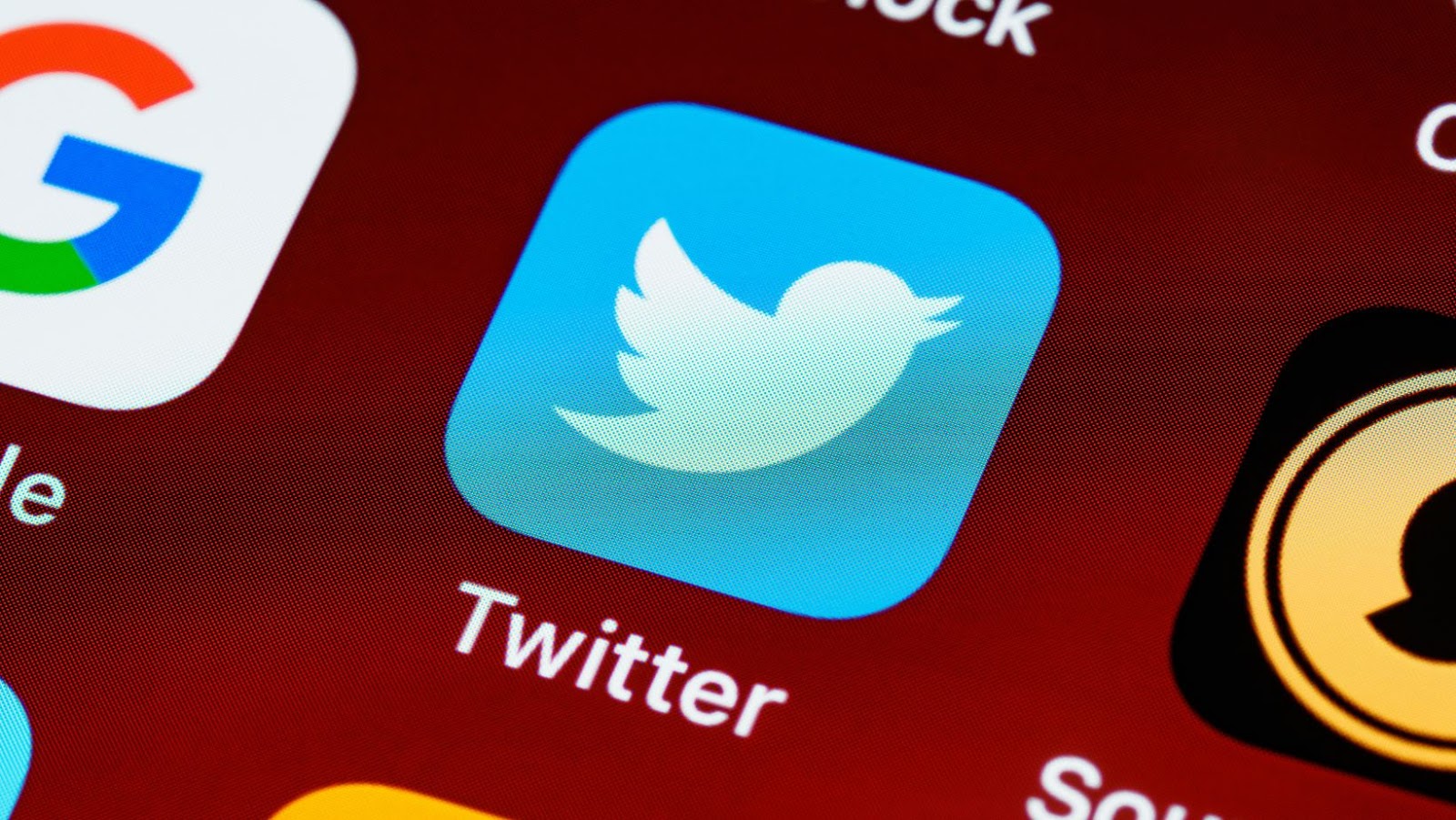Twitter is a great platform for personal use and can be used to connect with friends, family, and like-minded individuals. Here are some tips for using Twitter for personal use:
Set up your profile: Use a profile picture and header image that reflects your personality and interests. Write a bio that describes who you are and what you’re interested in.
Follow interesting accounts: Follow accounts of people or businesses that align with your interests. This will make your Twitter feed more engaging and tailored to your personal preferences.
Tweet regularly: Share your thoughts, opinions, and experiences with your followers. Tweet about things that interest you or ask your followers questions to spark conversations.
Engage with others: Reply to tweets that catch your eye, retweet content that you find interesting, and like posts that you enjoy. This will help you build connections with other users and grow your own following.
Pro tip: Remember to keep your content appropriate and respectful on Twitter since it is a public platform.
Setting Up Your Twitter Account
Twitter is a great platform for personal use. With Twitter, you can stay up to date with the latest news, communicate with friends and family, and even promote yourself or your business.
Setting up a Twitter account is easy, but there are a few things you should know before doing so. Let’s explore the process of creating a Twitter account for personal use in this article.
Choosing your Twitter handle (username)
Choosing the right Twitter handle, or username, is an essential step when setting up a Twitter account for personal use. Your handle is the unique identifier that will be associated with your account and used by others to search for and interact with you.
Here are some tips to keep in mind:
Keep it short and simple: Choose a handle that is easy to remember and type, preferably under 15 characters.
Make it relevant: Consider using your name, industry, or a keyword related to your interests in your handle to help others easily identify and connect with you.
Avoid numbers and symbols: Numbers and symbols can make your handle more difficult to remember and find.
Check availability: Before finalizing your handle, make sure that it is not already taken by someone else.
Pro Tip: It’s a good idea to choose a handle that you can use consistently across all your social media accounts to make it easy for others to find and connect with you.
Setting up your profile picture and header image
Setting up your profile picture and header image is a crucial step in successfully creating your Twitter account for personal use. Your profile picture and header image are the first impressions that viewers will have of your page and can greatly influence whether they choose to follow you or not.
Here are a few tips:
Profile Picture:
– Use a clear and sharp image of yourself or a representative image of what you will be tweeting about
– The ideal size for a Twitter profile picture is 400 x 400 pixels
– Ensure your picture is high-resolution and not pixelated
Header Image:
– Use a header image that represents your interests or brand
– The ideal size for a Twitter header image is 1500 x 500 pixels
– Use high-quality images or graphics in your header
Keep in mind that your profile picture and header image should both be visually appealing and give viewers an idea of what you can offer them on Twitter. With the right images and message, you can increase your chances of gaining more followers and creating a successful Twitter presence.
Writing a bio that accurately represents you
When setting up a Twitter account for personal use, writing a bio is critical. Your bio is the first impression people will have of you on Twitter- it’s a brief blurb that needs to accurately represent who you are.
Here are some tips to help you write an accurate and compelling Twitter bio:
Keep it short and to the point- your bio should be concise and informative, so limit it to 160 characters or less.
Highlight your interests and hobbies- mention what you’re passionate about and what you enjoy doing in your free time.
Showcase your skills and expertise- if you’re a subject matter expert, highlight that in your bio.
Include a bit of personal information- share some interesting facts about yourself that help people get to know you better.
Finally, don’t forget to add a profile picture- choose a picture that’s clear, current, and visually appealing, so people remember who you are.

@nyasriy_qq
Twitter is an amazing tool that can help you stay connected with your friends, family and people in your community. It also makes it easy to find and follow people who share your interests and passions.
However, it is important to be mindful when it comes to finding and following people on Twitter, so as to ensure that your personal information remains secure.
In this section, we will explore the various ways to find and follow people on Twitter.
Searching for people and keywords
When it comes to finding and following people on Twitter for personal use, using keywords is essential. Keywords are words or phrases that are relevant to the topic or interest that you want to explore on Twitter. By using keywords strategically in your searches, you can uncover new accounts and content that align with your interests.
Here are some tips for finding and following people on Twitter for personal use:
- Use relevant keywords to search for accounts, topics, and hashtags.
- Follow accounts that share content related to your interests and engage with their posts to build relationships.
- Use Twitter lists to organize the accounts you follow and make it easier to filter content on your homepage.
By using these tips, you can leverage keywords to find and follow meaningful accounts on Twitter for personal use. Pro Tip: Make sure to engage actively with your followers and share your thoughts on your interests.
Following people with similar interests
Following people with similar interests is the key to building a relevant and engaging Twitter feed. Here are a few tips for finding and following people on Twitter for personal use:
1. Use Twitter’s Advanced Search function to find people tweeting about topics that interest you.
2. Look for influencers in your niche and follow the people they follow.
3. Find and participate in Twitter chats related to your interests.
4. Join Twitter lists created by others with similar interests to yours.
Remember that following like-minded people on Twitter is a two-way street. Engage with their tweets by commenting, retweeting, and sharing your own insights to foster a genuine connection. So, start building your community on Twitter today by finding and following people with similar interests.
Creating Twitter lists for different types of content
Creating Twitter lists is an excellent tool for efficiently managing and organizing different types of content on Twitter.
Here is how to create a Twitter list:
On your Twitter profile, click on “Lists” and then “Create New List.” Give your list a name and a brief description. Choose whether your list is private or public. Search for Twitter accounts that post content related to your list’s theme by using keywords or hashtags. Click the three dots found next to the account’s name and then add it to your list.
You can easily access the list to view its content and engage with the users on it. By using Twitter lists, you can organize content by topic, location, industry, or any other criteria, making it easier for you to follow and engage with relevant accounts. This enhances your user experience while you are using Twitter for personal use.
@bridiuoosmimrki
Using Twitter for personal use is a great way to stay connected with family and friends, share your opinion and voice on topical issues, and even build relationships with potential customers and colleagues.
Creating and publishing tweets is the first step in getting started and the process is very straightforward. Let’s take a closer look at the process.

Types of tweets (text, photos, videos, links, polls)
Twitter offers several types of tweets to its users, each with its own purpose and benefits. These include text, photos, videos, links, and polls.
Text tweets are the most basic and common type of tweet, consisting of a maximum of 280 characters, and can be used to share thoughts, opinions, news, and updates.
Photo and video tweets allow users to share visual content along with a caption, making their tweets more engaging and memorable.
Link tweets are used to share articles, blog posts, and other web content, allowing users to drive traffic to their websites or share interesting information with their followers.
Poll tweets enable users to create a poll with up to four options, making it easy to gather opinions and feedback from their followers.
When used strategically, these types of tweets can help users build their presence, connect with their followers, and achieve their goals on the platform.
Best practices for writing engaging tweets
Twitter is a great tool for personal use to build your online presence and engage with your audience. Here are some best practices for writing engaging tweets:
1. Keep it short and sweet- stick to less than 280 characters to allow for retweets and mentions.
2. Use Hashtags – Incorporate popular hashtags in your tweets to increase visibility and reach new audiences.
3. Add Visuals – Tweets with visuals such as images or videos tend to receive more engagement than those without.
4. Ask questions – This encourages your audience to engage with your tweet and share their thoughts.
5. Use Verbs – Add an action word to your tweet to make it more engaging and encourage your audience to click through or respond.
By following these best practices, you’ll craft more engaging and effective tweets for your personal Twitter account.
Utilizing hashtags for discoverability
Utilizing hashtags on Twitter is an excellent way to increase your discoverability and reach a wider audience.
Here are some tips for using hashtags for personal use on Twitter:
1. Use relevant keywords and phrases that are specific to your content or interests. (#bookstagram, #travelphotography, etc.)
2. Keep your hashtags short and easy to remember.
3. Don’t use too many hashtags in one tweet. Stick to 2-3 hashtags per tweet.
4. Use trending hashtags to capitalize on current events and increase exposure.
Overall, using hashtags on Twitter is an excellent way to connect with others who share your interests and increase your personal brand’s exposure.
Pro tip: Don’t just use hashtags to promote your content, but also use them to engage with others and join the conversation.
@amamiyananao
Twitter is one of the most widely used social media networks for personal use, and you can use it to connect with new people, share your opinions, and follow news from around the world.
What makes Twitter really powerful is the ability to engage with others by replying to tweets, retweeting, and liking posts.
Now let’s dive into the details on how you can maximize the engagement with others on Twitter.

Responding to tweets and DMs
Responding to tweets and DMs is crucial when using Twitter for personal purposes, as it allows you to connect with other users and build your online presence. Here are some tips for engaging with others on Twitter:
• Respond in a timely manner: Try to reply to tweets and DMs within 24 hours and maintain a consistent response time to build trust and a good reputation.
• Be polite and professional: Keep your responses respectful and professional, even when dealing with negative comments or criticism.
• Personalize your responses: Use the other user’s name and include personal touches to your replies to make them feel seen and heard.
• Encourage discussions: Ask thoughtful questions and share insights to spark conversations and engage with your followers.
• Stay true to your brand: Keep your tone and messaging consistent with your personal or professional goals and values.
By following these tips, you can effectively engage with others on Twitter and build a strong personal brand or online presence.
Retweeting and quoting tweets
Retweeting and quoting tweets is an effective way to engage with others on Twitter for personal use. Retweeting allows you to share somebody else’s tweet with your followers’ network, while quoting enables you to add your own perspective and comments to the tweet before retweeting.
To Retweet a tweet:
1. Click on the Retweet button under the tweet.
2. You may choose to add a comment or leave it as is.
3. Click on Retweet to complete the process.
To Quote a tweet:
1. Click on the Retweet button under the tweet.
2. Select “Quote tweet” from the options.
3. Add your own comments or thoughts to the tweet.
4. Click on Tweet to complete the process.
Remember, engaging with others on Twitter is a great way to build your personal brand and connect with like-minded individuals. So, retweet and quote away!
Participating in Twitter chats and using relevant hashtags
Participating in Twitter chats and using relevant hashtags are effective ways to engage with others on Twitter for personal use.
Twitter chats provide a platform for individuals to engage in live discussions about specific topics with other users. To participate in a Twitter chat, search for the relevant hashtag and join the conversation by responding to prompts and tweets.
Hashtags can also be used to categorize tweets and make them more discoverable to other users interested in the same topic. Including relevant hashtags in your tweets can help grow your following, increase engagement, and expand your reach.
Pro tip: Use tools like TweetDeck or Hootsuite to keep track of Twitter chats and relevant hashtags in real-time.
@kensuke00002
Twitter is an amazing social platform for personal use. It enables users to stay in contact with their friends, family and even strangers from around the world.
However, using Twitter for personal use also comes with certain risks. In this article, we will cover the privacy and security aspects of using Twitter for personal use.

Updating your password and email notifications
As an essential security measure on Twitter, regularly updating your password is important. Also, enabling email notifications keeps you informed about any suspicious activity related to your account. Here is how to update your password and enable email notifications on Twitter for personal use:
Updating the Password:
Sign in to your Twitter account and go to the “Settings and Privacy” section. Click on “Account” and then “Password”. Enter your current password, new password, and confirm it. Finally, click “Save Changes”.
Email Notifications:
Sign in to your Twitter account and click on “Settings and Privacy”. Go to “Notifications” and click on “Email Notifications”. Toggle on “Security and Login” and “Password Reset”. Twitter also offers other email notifications you can customize to suit your preferences.
Pro Tip: Use a strong, unique password with a combination of uppercase and lowercase letters, numbers, and symbols to secure your Twitter account. Also, enable two-factor authentication for an extra layer of security.
Making your account private (optional)
Making your Twitter account private is an optional feature that adds an extra layer of security and privacy to your account, especially if you are using Twitter for personal use.
Here’s how to make your Twitter account private:
Log in to your Twitter account.
Click on your profile picture and select “Settings and privacy.”
Under the “Privacy and safety” tab, scroll down to the “Tweets” section.
Check the box next to “Protect your Tweets” to make your account private.
Only people who follow you can see your tweets, and you have to approve any new followers before they can access your tweets.
Note: If you change your Twitter account from public to private, your previous tweets will still be public and accessible to anyone. So, before you make your account private, consider deleting any tweets you don’t want to be public anymore.
Pro tip: Keep your Twitter account private if you want to control who can see your tweets and protect your personal information.
Protecting your account from hacks and impersonators
Twitter is a platform where users can share their thoughts and opinions in real-time. However, with this freedom comes the risk of hacks and impersonators. Here are some tips to protect your account from these threats while using Twitter for personal use.
1. Use a strong and unique password for your account.
2. Enable two-factor authentication to add an extra layer of security to your account.
3. Avoid clicking on suspicious links or messages.
4. Don’t share personal information such as your phone number, address or credit card details.
5. Keep an eye out for impersonators pretending to be you and report them to Twitter immediately.
6. Regularly update your account’s security settings and analyze your privacy options.
By following these simple steps, you can help to protect your Twitter account from hacks and impersonators, ensuring that your experience on the platform remains safe and enjoyable.
Pro-tip: Regularly check your account activity log to detect any unauthorized access or suspicious activity.












